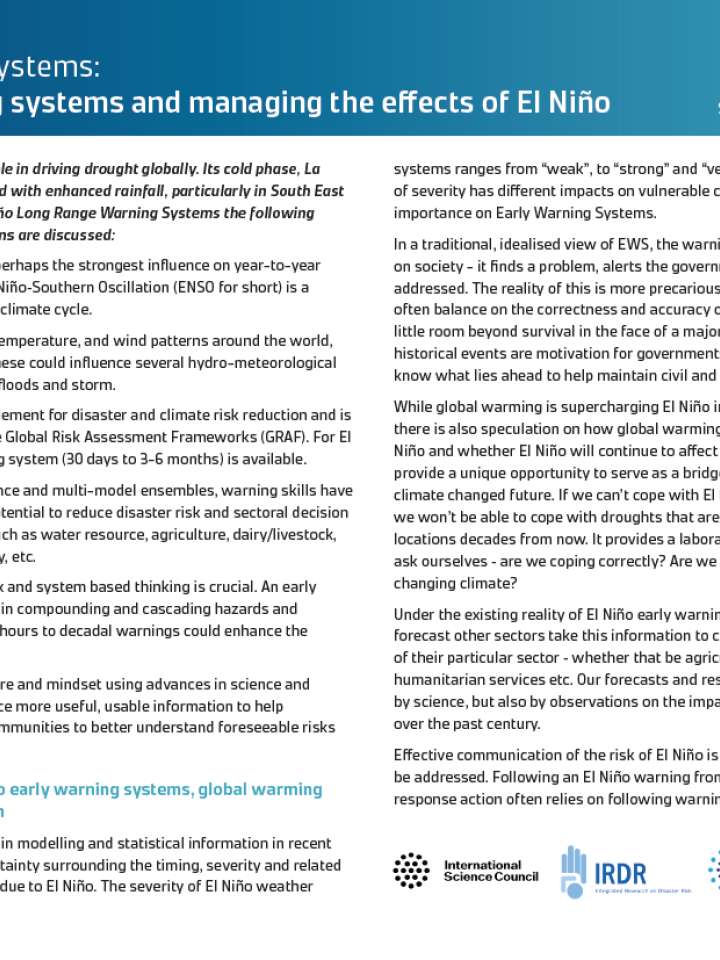A system of systems: Early warning systems and managing the effects of El Niño
El Niño plays a dominant role in driving drought globally. Its cold phase, La Niña, tends to be associated with enhanced rainfall, particularly in South East Asia. In this review of El Niño Long Range Warning Systems the following issues and recommendations are discussed:
- El Niño and La Niña have perhaps the strongest influence on year-to-year climate variability. The El Niño–Southern Oscillation (ENSO for short) is a naturally occurring global climate cycle.
- ENSO influences rainfall, temperature, and wind patterns around the world, including New Zealand. These could influence several hydro-meteorological hazards such as drought, floods and storm.
- Early warning is the key element for disaster and climate risk reduction and is highlighted strongly in the Global Risk Assessment Frameworks (GRAF). For El Niño, a long-range warning system (30 days to 3-6 months) is available.
- With the advances in science and multi-model ensembles, warning skills have increased and have the potential to reduce disaster risk and sectoral decision making as across fields such as water resource, agriculture, dairy/livestock, energy, epidemics, ecology, etc.
- The reality is very complex and system-based thinking is crucial. An early warning system factoring in compounding and cascading hazards and a seamless integration of hours to decadal warnings could enhance the decision-making process.
- With a change in our culture and mindset using advances in science and technology, we can produce more useful, usable information to help industries, sectors and communities to better understand foreseeable risks and adaptation options
Explore further
